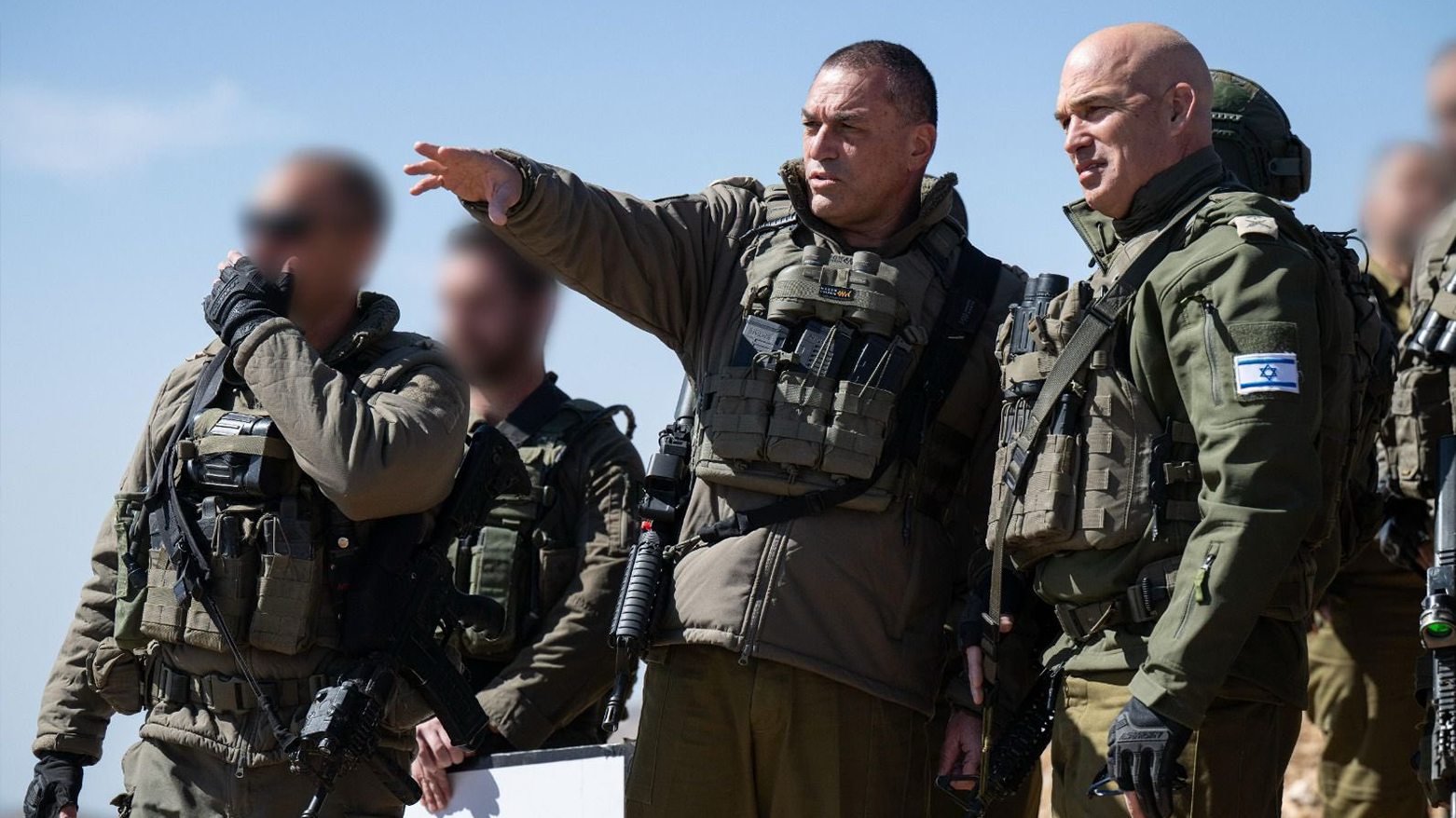Israeli Army Chief: Occupation of Southern Syria Necessary for Security
“This area is vital,” Eyal Zamir said. “We entered here because Syria has disintegrated. That’s why we control key points and maintain a forward presence to defend ourselves optimally.”

By Ahora Qadi
ERBIL (Kurdistan 24) – The Israel Defense Forces (IDF) Chief of Staff Lt.-Gen. Eyal Zamir stated on Sunday that the Israeli army is firmly positioned inside Syria due to the country’s fragmentation, underlining the military’s strategic presence along the frontier to “defend ourselves in the best possible way.”
During a field tour and operational assessment in southern Syria, General Zamir —Accompanied by commander of the Israeli military’s Northern Command, Major General Ori Gordin, the Commander of the 210th Division, Lt. Col. Yair Balai, and other senior officers—met with field commanders and soldiers. The visit comes amid rising regional tension and ongoing Israeli operations beyond the Golan Heights.
Strategic deployment in a collapsed neighbor
“This area is vital,” Zamir said. “We entered here because Syria has disintegrated. That’s why we control key points and maintain a forward presence to defend ourselves optimally.”
Standing at a military post overlooking the mountainous border region, Zamir pointed out the significance of Israel's positioning: “From here, we can observe anyone operating across this entire ridge. It’s a strategic vantage point. While we cannot predict how events will evolve, our presence here is of critical security value.”
He confirmed that the Israeli military would continue defensive and offensive operations as needed, stressing the imperative of preemptive deployment in what the army refers to as a “security zone” to shield Israeli citizens from emerging threats.
Netanyahu demands full demilitarization of southern Syria
The remarks follow Israeli Prime Minister Benjamin Netanyahu’s call on February 23 for the “complete demilitarization” of Syria’s southern provinces—Quneitra, Daraa, and Suwayda—amid fears of instability following the ouster of Bashar al-Assad by an Islamist-led rebel coalition.
“We will not allow forces from the HTS organization or the new Syrian army to enter the area south of Damascus,” Netanyahu declared, referring to Hayat Tahrir al-Sham, one of the main factions behind the offensive that toppled Assad in December.
On the same day Assad fell, Israeli troops entered the UN-monitored buffer zone established in 1974 between Israel and Syria in the Golan Heights. Netanyahu affirmed that Israeli forces would remain in the buffer zone “indefinitely” to protect Israeli communities and “thwart any threat.”
A long shadow of intervention
Since the outbreak of the Syrian civil war in 2011, Israel has carried out hundreds of airstrikes on Syrian territory, targeting primarily Iranian-linked forces and weapons shipments. Following Assad’s removal, Israel intensified its aerial campaign to prevent advanced military assets from being seized by hostile actors.
The latest developments reflect a broader Israeli strategy to pre-empt threats and assert military dominance along its northern frontier, particularly amid fears of a spillover from Syria’s volatile post-war landscape.
While Syria’s new leadership has condemned Israeli incursions and demanded international action, Israel maintains that its security operations are necessary to prevent southern Syria from becoming a launchpad for attacks against its territory.